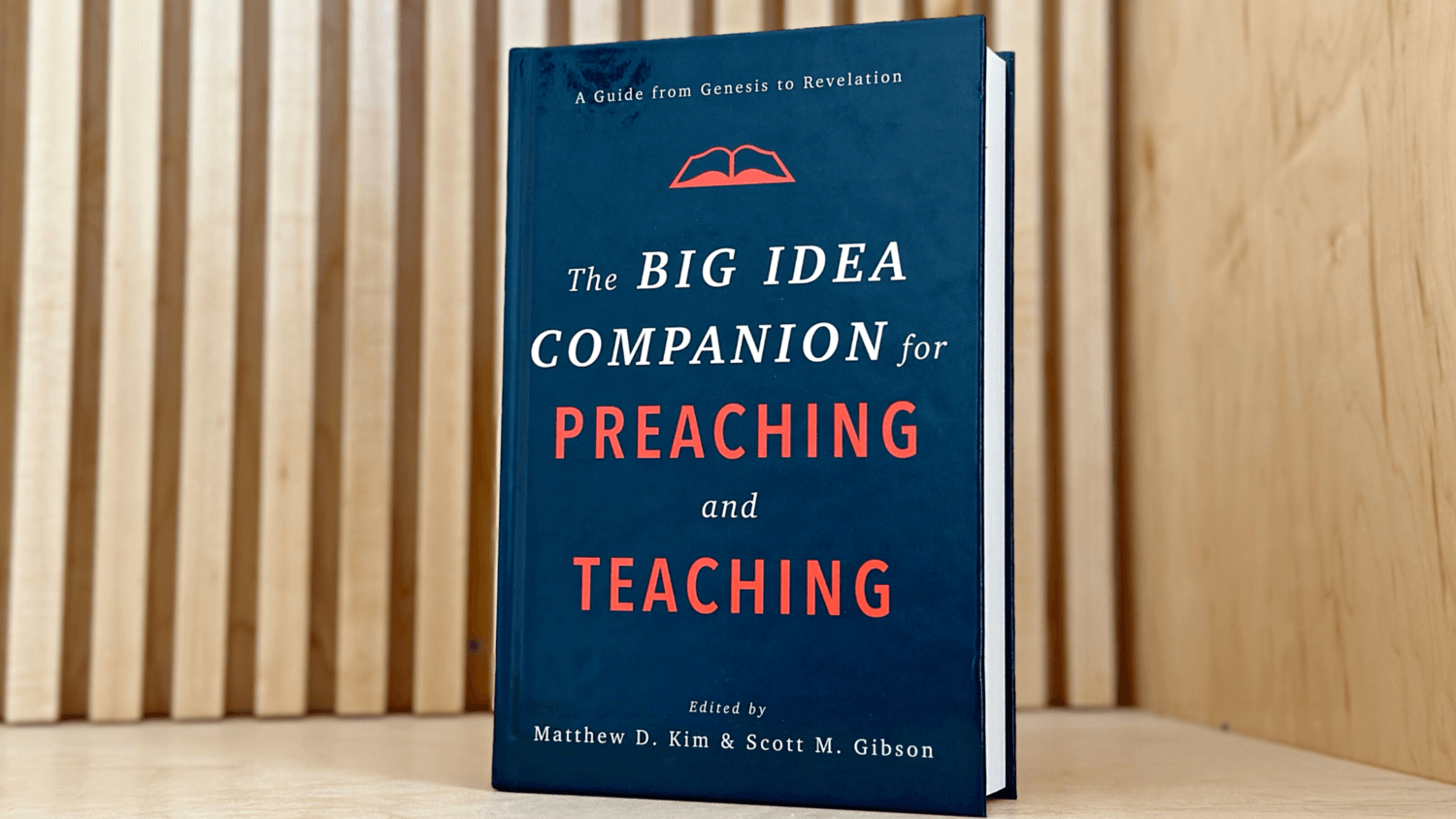Have you ever heard a sermon that seemed to have no point? While this may be due to the lack of communication skills in the preacher, it can also come from not knowing what the biblical passage is actually saying. In The Big Idea Companion for Preaching and Teaching, Matthew D. Kim and Scott M. Gibson guide you through the big ideas from Genesis to Revelation.
Biblical Preaching
The “big idea” approach to preaching was made popular in Haddon Robinson’s Biblical Preaching. Robinson taught the importance of the “concept” derived from the biblical text in expository preaching. It is the passage that governs the sermon. The passage is studied to determine the concept. The concept is communicated by the expositor and applied to the hearers.
With this background in mind, Kim and Gibson have compiled an incredible resource for expository preachers. Primarily a reference work, The Big Idea has several features for practical use. It presents the big idea of each biblical book, providing a critical framework of understanding the context. A section on selecting preaching and teaching passages helps for sermon planning as you make your preaching schedule. The other parts of the book break down passages, presenting the subject, complement, exegetical idea, and homiletical idea.
A Tool for Teachers and Preachers
There are various contributors to The Big Idea, with each contributor assigned to different books of the Bible. Kim notes in the introduction that each contributor has a distinctive process for dividing the passages and determining the big ideas. He also notes that the contributors are also fallible, meaning using this book should not be a replacement for your own study as an expositor. This book is to be used as a tool to make sure your sermons fly straight and are aimed on target.
Share What God is Saying
I started using The Big Idea as I prepared to preach a sermon on John 17:1-19. My own big idea was that Jesus prays for his people to be protected, united, and sanctified — for their joy and for his glory. I checked this against the section on John by Mary S. Hulst. She took John 17 in full, with the subject asking: “Why does John say that Jesus prays for his followers?” The complement answered: “Because he wants them to be one as he and the Father are one, so that the world will see their unity as a witness to God.”
Furthermore, the exegetical idea is that “John says that Jesus prays for his followers because he wants them to be one as he and the Father are one, so that the world will see their unity as a witness to God.” The homiletical idea is that “Jesus prays for us to be united as a witness to a broken world.” I was pleased to see that while not exactly the same, I had hit on some of her same ideas as I crafted my own sermon. It was encouraging and helped me gain confidence as I prepared to preach my sermon.
For new preachers such as myself, this is an invaluable book that will be a true and trusted help. For more seasoned preachers, this book will sharpen your study, propel your writing, and strengthen your sermons. Share what God is saying by preaching the big idea of the passage. Preach the word; be ready in season and out of season; reprove, rebuke, and exhort, with complete patience and teaching (2 Timothy 4:2). All Scripture is breathed out by God and profitable for teaching, for reproof, for correction, and for training in righteousness, that the man of God may be complete, equipped for every good work (2 Timothy 3:16-17).
I received a media copy of The Big Idea Companion for Preaching and Teaching and this is my honest review.

